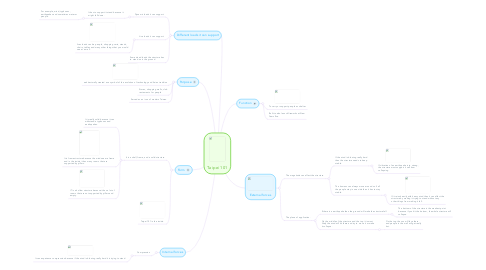
1. Purpose
1.1. architecturally created as a symbol of the evolution of technology and Asian tradition
1.2. Stores, shopping malls, club restaurants for people
1.3. Served as an icon of modern Taiwan.
2. Function
2.1. To carry or support people as shelter.
2.2. Built to also launch fireworks at New Years Eve.
3. Form
3.1. It is a shell, frame, and a solid structure.
3.1.1. It is really solid because it can withstand a typhoons and earthquakes.
3.1.2. It is frame structure because the windows are frame and in the inside it has many rooms that are supported by pillars.
3.1.3. IT is a hollow structure because it has a lot of rooms that are not supported by pillars and empty.
3.2. Taipei 101 in the inside.
4. External forces
4.1. The magnitude can affect the structure.
4.1.1. If the wind is blowing really hard then the structure needs to keep stable.
4.1.1.1. If vibration of an earthquake is to strong, the structure must support it self from collapsing
4.1.2. The humans can always move around so if all the people stay in one side then it has to stay stable.
4.1.2.1. If it rains heavily with heavy wind then it can affect the structure by making it trying to stand without any other things from making it fall.
4.2. The plane of application.
4.2.1. If there is a earthquake then the ground will make the structure fall.
4.2.1.1. The bottom of the structure is the weakest point because if you hit the bottom, the whole structure will collapse.
4.2.2. On the middle of the structure and the top it is most likely the wind will hit there and try to move it or make it collapse.
4.2.2.1. On the top the sun will face there and people in the mall will get really hot.
5. Internal forces
5.1. Compression
5.1.1. It can experience compression because if the wind is blowing really hard it is trying to stand.
6. Different loads it can support
6.1. Dynamic loads it can support.
6.1.1. It has to support it stand because it might fall down.
6.1.1.1. For example, wind, typhoons, earthquakes and sometimes water or people.
6.2. Live loads it can support.
6.2.1. lives loads can be people, shopping carts, stands, chairs, tables and many other things that you would see at a mall.

